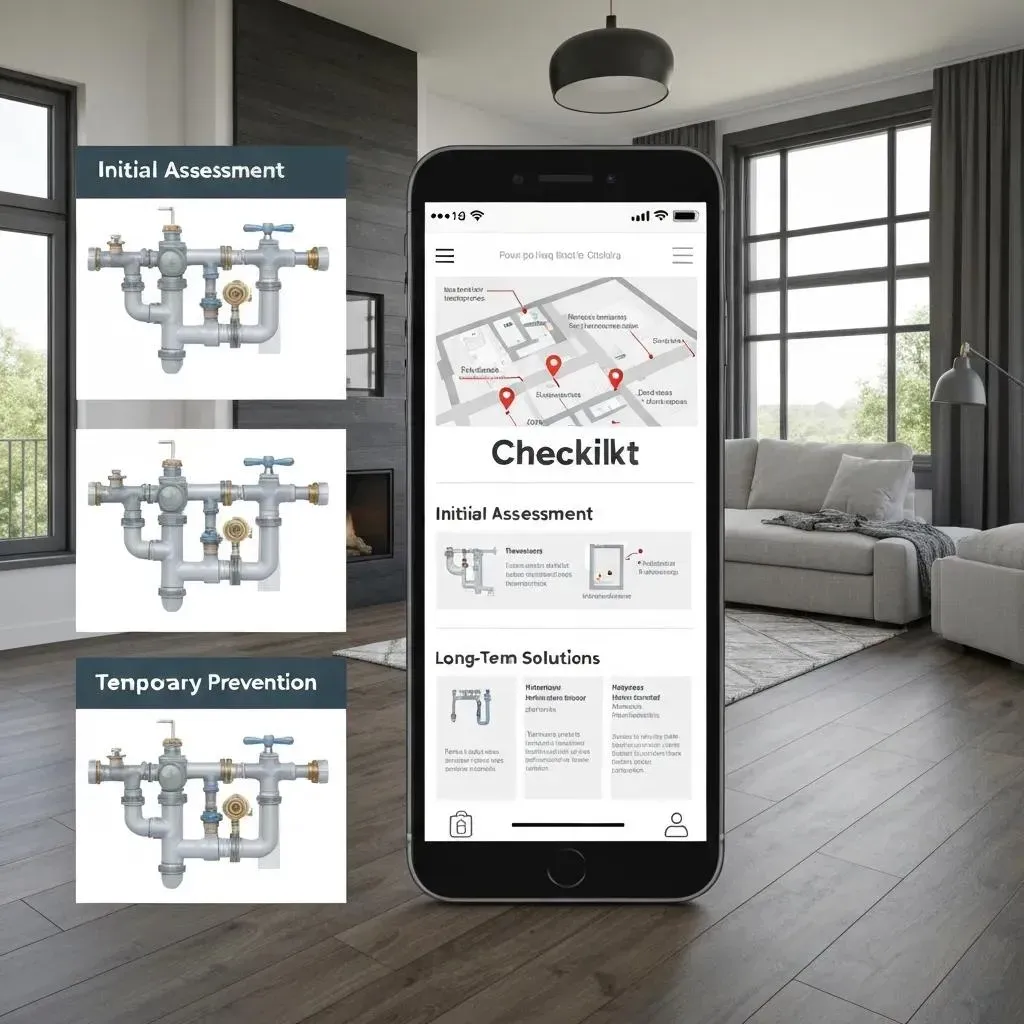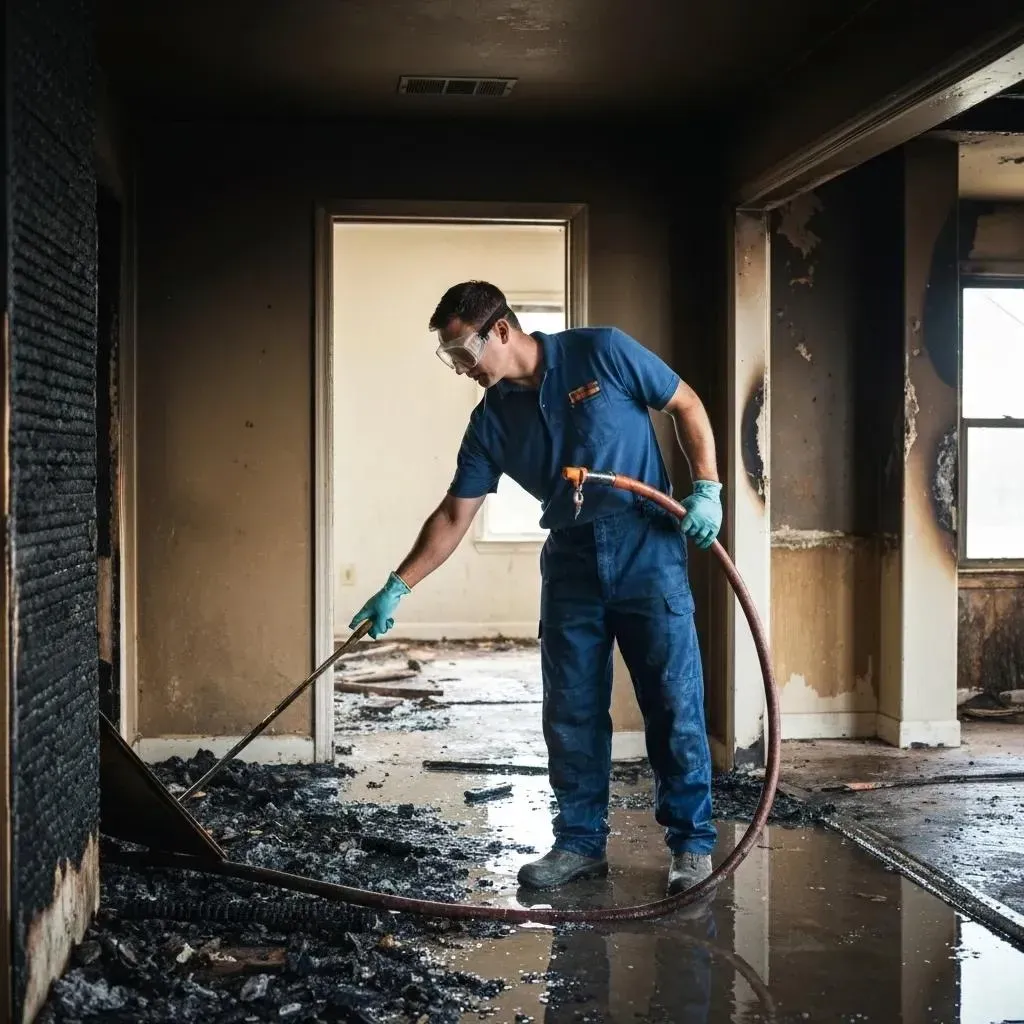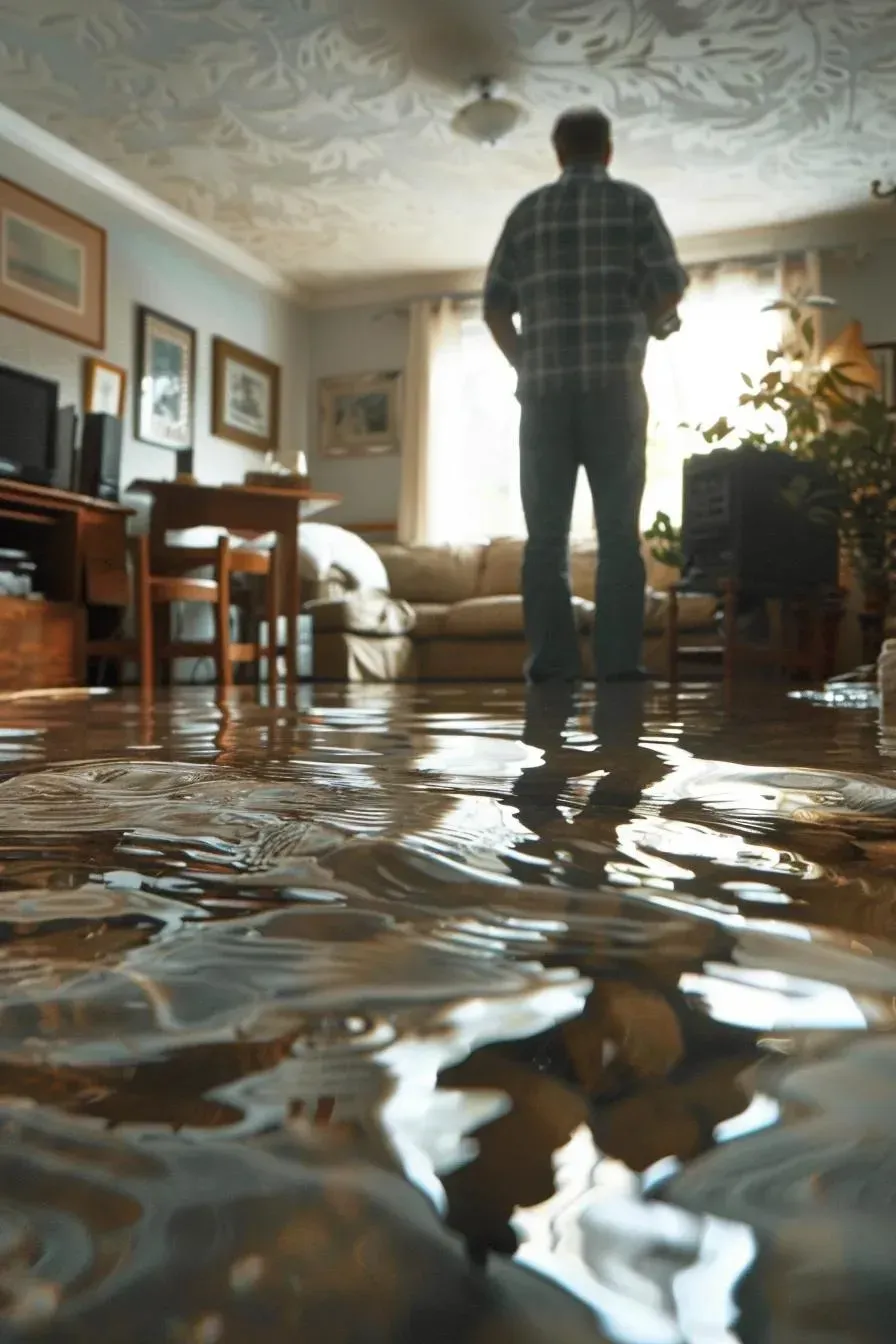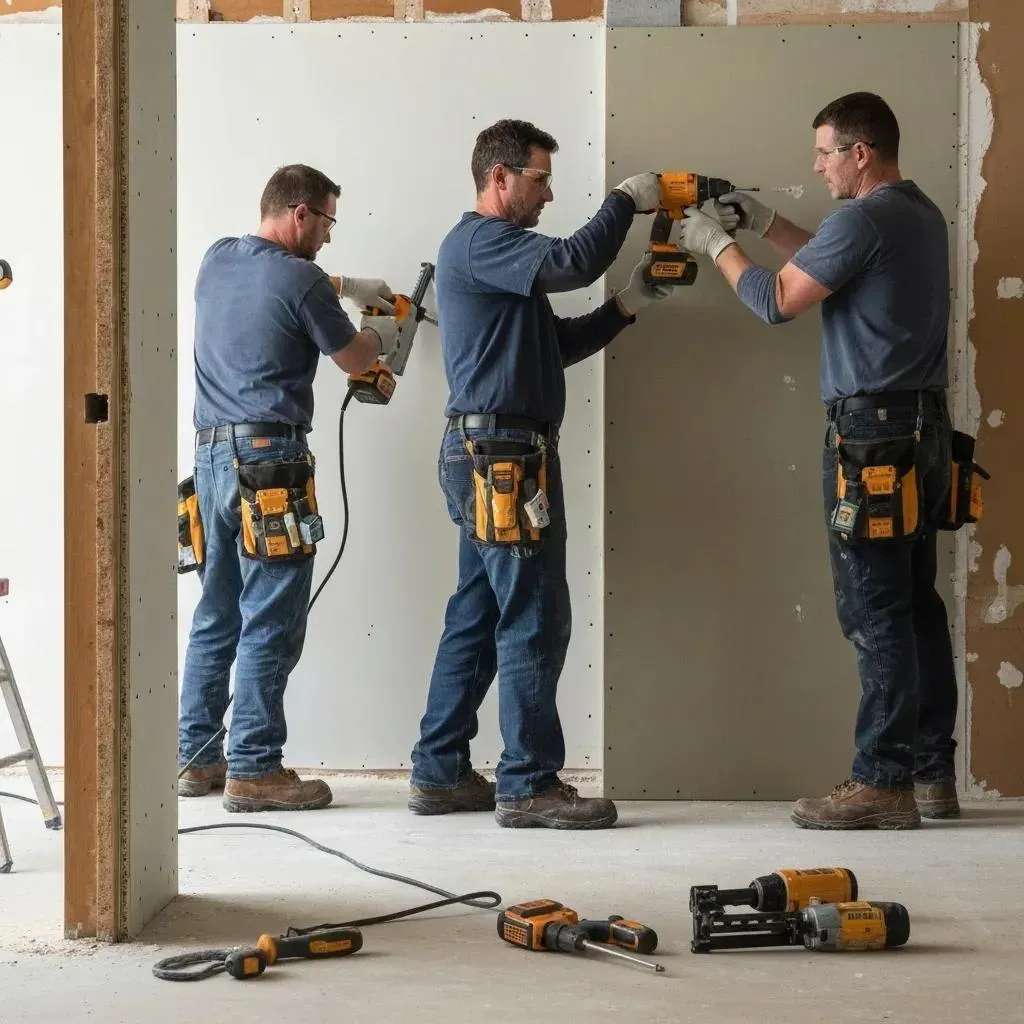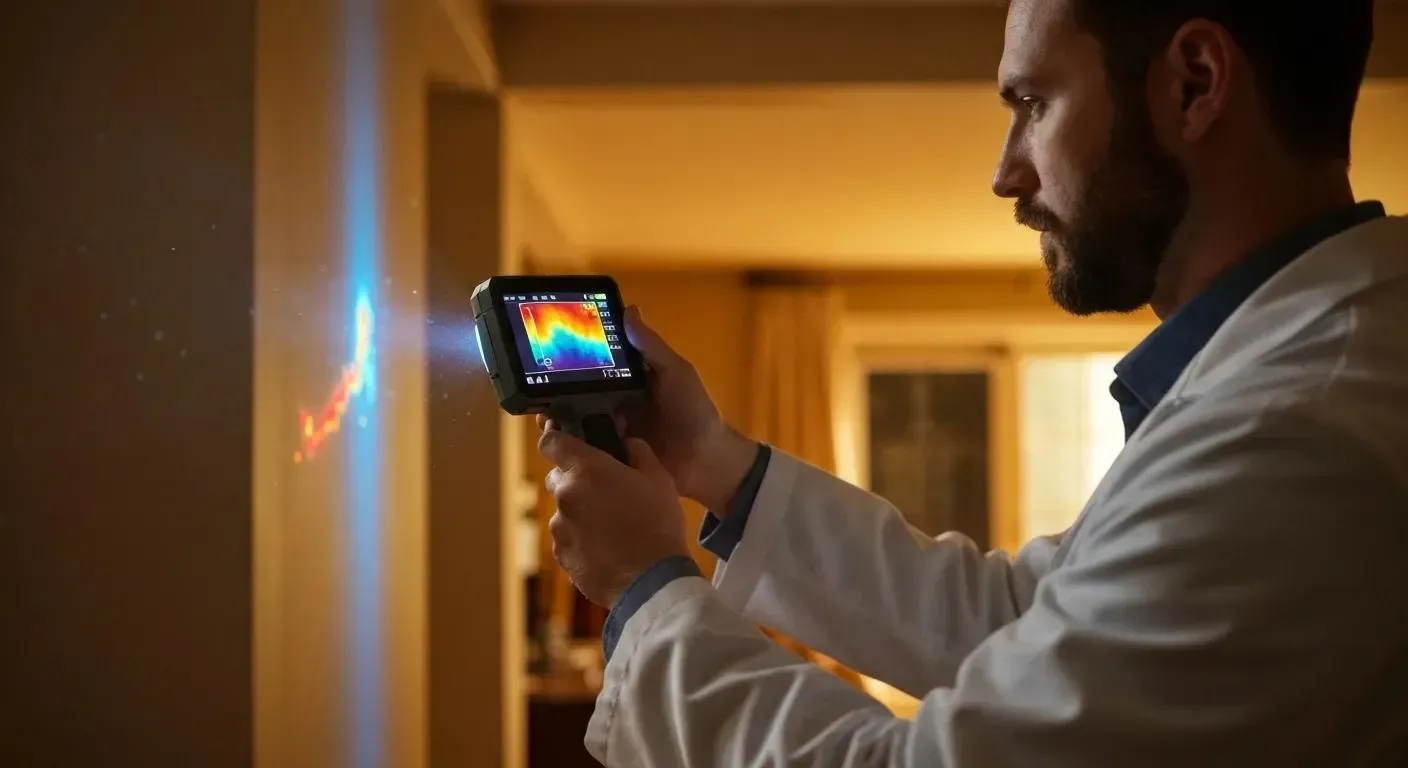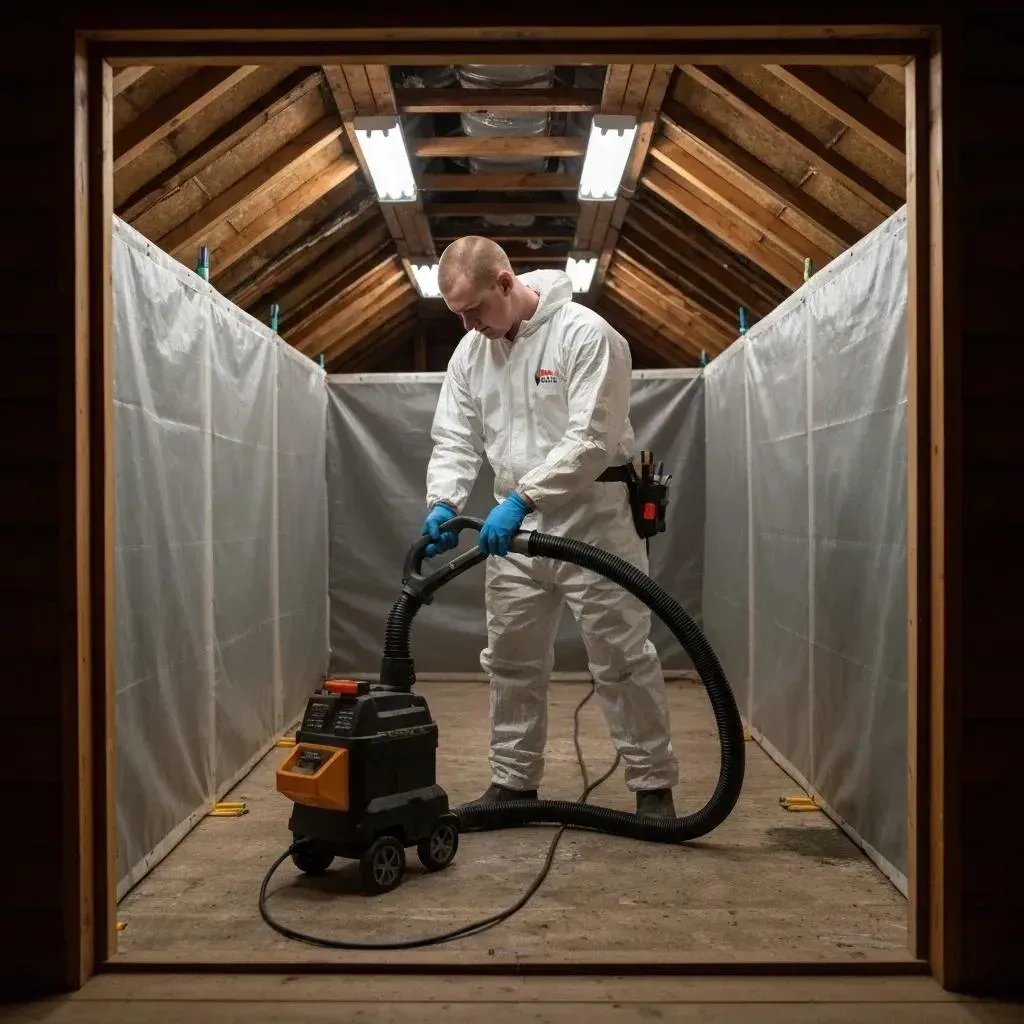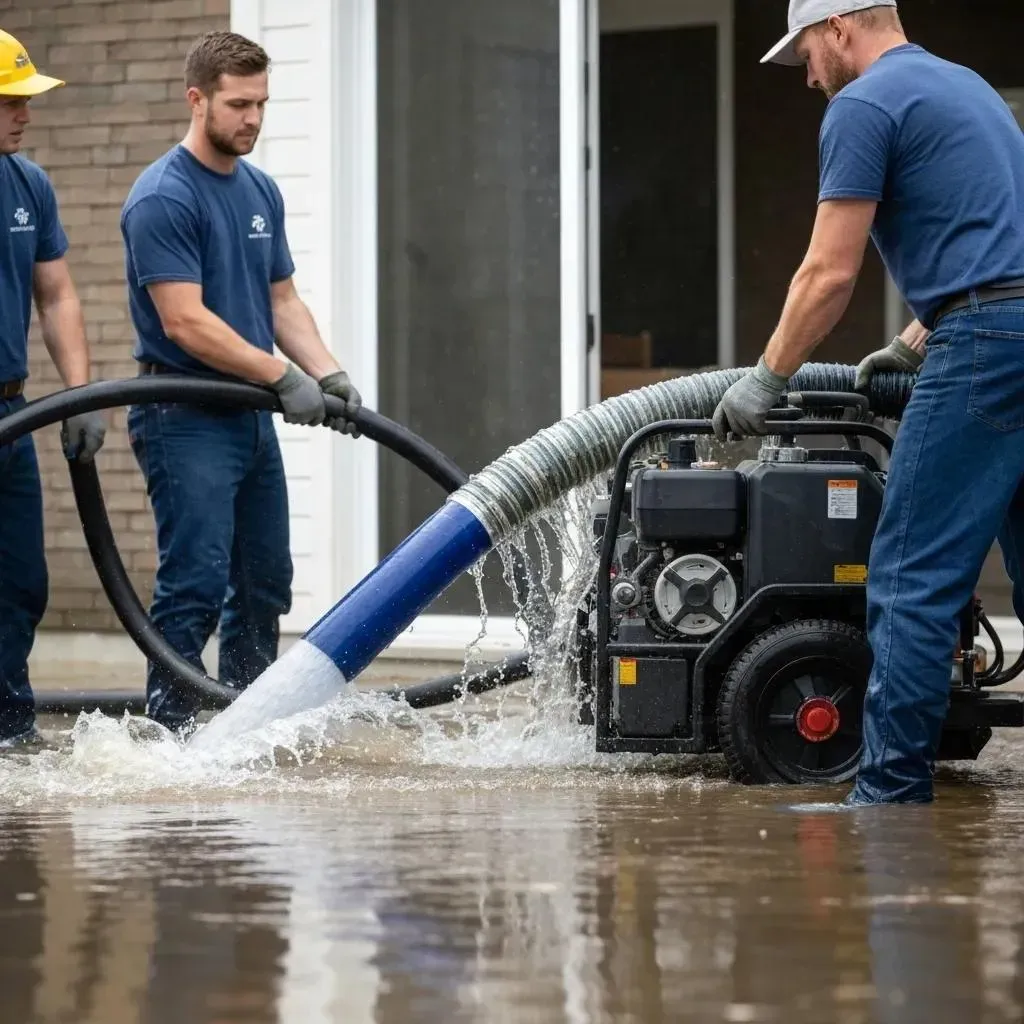Blog
When Disaster Strikes: Understanding the Impact of Water Damage
Broken pipe water damage can turn your peaceful home into a disaster zone in minutes. When pipes burst, they can release hundreds of gallons of water per hour, causing extensive structural damage, mold growth, and thousands of dollars in repairs.
Quick Response Guide for Broken Pipe Water Damage:
- Turn off main water supply immediately
- Shut off electricity to affected areas
- Call a professional plumber and restoration company
- Document damage with photos for insurance
- Remove standing water and begin drying within 24-48 hours
- Contact your insurance company to file a claim
The first 24-48 hours are critical. Mold can begin growing within this timeframe, and water damage becomes exponentially more expensive the longer it sits. A single burst pipe can cause more than $5,000 in damage according to insurance industry data, with water damage and freezing accounting for nearly 22% of all homeowners insurance claims.
Colorado's extreme temperature swings make homes particularly vulnerable to pipe bursts. When temperatures drop below 20°F for six hours or more, pipes can freeze and burst. The expanding ice creates internal pressure that even the strongest pipes can't withstand.
Acting fast is everything. Every minute counts when water is pouring into your home, damaging floors, walls, furniture, and creating perfect conditions for dangerous mold growth.
I'm Mike Martinez, owner of Accountable Home Services, and I've helped hundreds of Denver-area families recover from broken pipe water damage emergencies over the past decade. My team responds 24/7 to minimize damage and get families back into safe, dry homes as quickly as possible.

Broken Pipe Water Damage 101
When your pipes fail, you're not just dealing with a puddle on the floor. Broken pipe water damage creates a cascade of problems that can affect your home for months or even years if not handled properly. The water you see is only part of the story—it's the hidden moisture seeping into walls, crawling under flooring, and settling into structural materials that causes the real headaches.
Think of it like an iceberg. The flooding you can see represents just a fraction of the total damage. Behind your walls and under your floors, moisture is creating the perfect environment for mold growth, wood rot, and structural weakening that can compromise your home's safety and value.
What is Broken Pipe Water Damage?
Broken pipe water damage happens when your home's plumbing system fails, allowing water to escape where it absolutely shouldn't be. But here's what many homeowners don't realize: not all pipe failures are created equal, and the difference can make or break your insurance claim.
Sudden pipe bursts are the dramatic disasters we all fear. One minute you're enjoying a quiet evening, the next you're standing ankle-deep in water wondering how this became your life. These catastrophic failures can dump 400 to 500 gallons per hour into your home—enough to flood an entire basement in just a few hours.
Gradual leaks, on the other hand, are the silent destroyers. They're like that friend who borrows money a little at a time until suddenly you realize they owe you hundreds of dollars. These sneaky leaks can waste thousands of gallons over months while slowly rotting away your home's structure from the inside out.
Here's why this distinction matters for your wallet: sudden bursts are typically covered by homeowners insurance, while gradual leaks often aren't. Insurance companies consider slow leaks a maintenance issue, which means you could be stuck with the entire repair bill if you don't catch them early.
| Sudden Burst | Gradual Leak |
|---|---|
| Releases hundreds of gallons quickly | Releases water slowly over time |
| Causes immediate, visible flooding | Often goes unnoticed for weeks/months |
| Usually covered by insurance | May not be covered (considered neglect) |
| Requires emergency response | Causes extensive hidden damage |
Most Common Causes in Colorado Homes
Living in Colorado means your pipes face challenges that homeowners in Florida or California never have to worry about. Our unique climate and geography create a perfect storm of conditions that can turn your plumbing into a ticking time bomb.
Freezing temperatures are the biggest villain in our story. When water freezes inside your pipes, it expands by about 9%, creating pressure that would make a hydraulic press jealous. Colorado's brutal winters, especially when temperatures stay below 20°F for six hours or more, turn this expansion into a pipe-bursting nightmare. I see the most emergency calls during those bone-chilling January and February cold snaps when even well-insulated pipes give up the fight.
High water pressure might sound like a luxury problem—who doesn't want strong shower pressure?—but it's actually slowly destroying your plumbing. Many Colorado homes have water pressure exceeding the safe range of 40-60 PSI. Think of it like overinflating a balloon; eventually, something's got to give. Mountain communities are especially vulnerable due to elevation changes that create naturally high pressure.
Pipe corrosion and aging hit older Denver, Westminster, and Boulder homes particularly hard. Those beautiful vintage homes with character? They often come with original copper or galvanized steel pipes that have been fighting Colorado's mineral-rich water for decades. Our hard water acts like sandpaper, slowly wearing away pipe walls until they can't hold pressure anymore.
Clogs and blockages create back-pressure that can burst pipes faster than you'd think possible. It's especially common in older homes with smaller diameter pipes, or homes where tree roots have decided your sewer line looks like a great place to set up shop.
Soil shifting and ground movement might surprise you, but Colorado's clay soil is like a slow-motion earthquake for your underground pipes. When our soil gets wet, it expands. When it dries out, it contracts. This constant movement puts stress on pipe joints that eventually leads to separation. Add in the occasional minor seismic activity along the Front Range, and your underground plumbing is under constant assault.
The good news? Understanding these risks means you can take steps to protect your home. For detailed strategies on preventing freeze damage, the Department of Energy offers scientific research on freeze-prevention that can save you thousands in repair costs.
Emergency Response Checklist
When you find broken pipe water damage in your home, panic is natural—but quick, decisive action is what saves your property. I've seen too many families lose thousands of dollars simply because they didn't know what to do first. The truth is, your response in those critical first minutes can be the difference between a manageable repair and a devastating loss.

Broken Pipe Water Damage Action Plan
Your first priority is stopping the water source. Find your main water shutoff valve—it's typically located where the water line enters your home. In most Denver-area homes, you'll find it in the basement, crawl space, or near your water meter outside. Turn the valve clockwise until it stops. Can't locate it? Don't waste precious time searching—call your water utility company immediately and ask them to shut off service to your address.
Next, address electrical safety immediately. If water is anywhere near electrical outlets, appliances, or your electrical panel, head straight to your circuit breaker and shut off power to those areas. Never—and I can't stress this enough—touch electrical switches or outlets with wet hands or while standing in water. I've seen this mistake turn a water emergency into a life-threatening situation.
Now drain your system completely. Turn on all faucets throughout your home, both hot and cold water, and flush your toilets. This releases pressure from your pipes and drains any remaining water that could cause additional damage. It might seem counterintuitive to run water during a pipe emergency, but you're actually preventing more bursts.
Time to protect your belongings. Quickly move furniture, electronics, important documents, and valuables away from the flooded area. A simple trick I always share with homeowners: place aluminum foil or plastic bags under furniture legs that you can't move completely—it creates a moisture barrier that can save your pieces.
Begin removing standing water immediately. Use whatever you have available—a wet/dry vacuum, mop, towels, even pots and pans if necessary. Focus your efforts on hardwood floors first (they're most vulnerable to permanent damage), then tackle carpeted areas. Every gallon you remove now saves you money later.
Finally, get air moving through the space. Open windows if the weather cooperates, turn on every fan you own, and run your HVAC system to promote air circulation. Moving air is your best friend in preventing mold growth, which can begin within 24 hours.
For immediate professional assistance with water extraction, our Emergency Water Extraction Services team responds 24/7 throughout the Denver Metro area. We've helped countless families minimize damage during those crucial first hours.
When to Call the Pros
While you can handle the initial emergency response, some situations require professional expertise from the start. Call a plumber immediately if you can't locate or operate your main water valve—time is too critical to keep searching. You also need professional help when the burst pipe is inside a wall or underground, when multiple pipes have failed, or if you're dealing with hot water lines or steam (these can cause serious burns).
Water damage restoration professionals become essential when water has been standing for more than 24 hours, when the affected area exceeds 10 square feet, or when water has penetrated walls, insulation, or structural materials. Trust me, if you smell any musty odors, that's often the beginning of mold growth, and you need expert intervention immediately.
Here's what many homeowners don't realize: broken pipe water damage often extends far beyond what you can see. At Accountable Home Services, we use professional moisture meters and thermal imaging cameras to detect hidden water damage in wall cavities, under flooring, and in other areas that seem dry to the naked eye. Our certified technicians can typically arrive within 90 minutes throughout the Denver Metro area, including Broomfield, Westminster, Thornton, Northglenn, Arvada, Boulder, Longmont, and Erie.
I always tell homeowners that every hour of delay increases restoration costs exponentially. What might be a $2,000 repair today could become a $10,000 problem tomorrow if mold takes hold. Don't gamble with your family's health and your home's value—learn more about our comprehensive Water Damage Restoration services and let our team help you get back to normal as quickly as possible.
Cleanup, Dry-Out & Restoration
When broken pipe water damage strikes your home, the real work begins after you've stopped the water flow. Professional restoration isn't just about mopping up puddles—it's a precise science that requires specialized equipment, expertise, and careful monitoring to prevent long-term problems like mold growth and structural damage.
The restoration process can feel overwhelming, but understanding what happens during each phase helps you know what to expect and ensures nothing gets missed. Every minute counts, and having the right team with the right approach makes all the difference between a complete recovery and ongoing problems.

Step-by-Step Dry-Out Roadmap
The first thing our team does when we arrive is assess the full scope of damage —not just what you can see on the surface. We use moisture meters and thermal imaging cameras to detect hidden water that's soaked into walls, under flooring, and into structural materials. This detective work is crucial because hidden moisture is where mold loves to grow.
Water extraction happens fast and efficiently using truck-mounted extractors that can remove thousands of gallons per hour. These aren't the small shop vacuums you might rent—our equipment creates powerful suction that pulls water from deep within carpets, padding, and subflooring. The faster we remove standing water, the less damage it causes to your home's structure.
Once the bulk water is gone, we move into the controlled drying phase. This is where science meets experience. We strategically place industrial air movers and commercial dehumidifiers to create optimal drying conditions throughout your home. It's not just about blowing air around—we calculate the right temperature, humidity levels, and airflow patterns to dry materials efficiently without causing warping, cracking, or other secondary damage.
Daily monitoring keeps the process on track. Our technicians check moisture levels in affected materials every day, documenting progress and adjusting equipment as needed. Different materials dry at different rates—hardwood floors might be ready in three days while thick carpet padding could take five. We don't guess—we measure until everything reaches safe moisture levels.
The final step is clearance and documentation. Once all materials reach acceptable moisture content, we conduct a thorough inspection and provide detailed documentation. This paperwork protects you from future insurance claims and proves the job was completed properly.
For a detailed breakdown of our restoration process, check out our Water Damage Repair Steps page.
Hidden Hazards After Broken Pipe Water Damage
Even after the water disappears, broken pipe water damage leaves behind invisible threats that can endanger your family's health and safety. These hidden hazards are why professional restoration is so important—we know where to look and how to address problems before they become disasters.
Electrical dangers lurk in wet walls and outlets. Water and electricity create a deadly combination, and moisture can hide in electrical systems long after surfaces appear dry. Even minor dampness can cause shorts, sparks, or fires weeks later. We always recommend having a qualified electrician inspect any electrical components that may have been exposed to water, no matter how minor the exposure seems.
Mold growth begins within 24 to 48 hours in damp conditions, and some types produce dangerous mycotoxins. According to the CDC's research on mold-health effects , exposure can trigger respiratory problems, allergic reactions, and serious health issues, especially in children, elderly family members, and anyone with compromised immune systems. The scary part? Mold often grows inside walls where you can't see it until it becomes a major problem.
Structural damage weakens your home's framework in ways that aren't immediately obvious. Water causes drywall to lose its structural integrity, wood beams to warp and rot, and metal components to corrode. What looks like minor surface damage often hides serious structural problems that can compromise your home's safety and value.
Contamination becomes a concern depending on how long water sits and what it contacts. Clean water from supply lines starts out relatively safe, but stagnant water quickly becomes a breeding ground for bacteria and other harmful microorganisms. Water that's contacted sewage systems or floodwater brings additional contamination risks that require specialized cleaning protocols.

The bottom line? Professional restoration isn't just about drying out your home—it's about protecting your family's health and your property's value. Our certified technicians have the training, equipment, and experience to identify and address these hidden hazards before they become expensive problems down the road.
Insurance, Documentation & Costs
Nobody wants to think about insurance claims when they're standing in ankle-deep water, but proper documentation can save you thousands of dollars and prevent months of headaches with your insurance company.
The reality is that broken pipe water damage claims average around $10,000, but I've seen them range from $1,350 for minor flooding to over $16,000 when extensive restoration is needed. The difference between a smooth claim process and a nightmare often comes down to one thing: how well you document everything from day one.
Documenting Your Loss Like a Pro
Your smartphone is your best friend during a water damage emergency. Before you start any cleanup, take comprehensive photos of everything. I tell my clients to photograph like they're creating a story—start with the water source and what caused the problem, then work your way through every affected room.
Don't just take wide shots —get close-up photos of damaged materials, waterlines on walls, and soggy belongings. These details matter when your adjuster is trying to understand the scope of damage weeks later. Take photos showing how far the water spread, and don't forget to document the "after" photos once cleanup begins.
Creating a detailed inventory might feel overwhelming when you're dealing with a crisis, but it's crucial. List every damaged item with a description, approximate age, and estimated value. That soggy couch might not look like much now, but if it was only two years old, it represents significant value on your claim.
Save every receipt from your emergency response—those tarps, fans, and cleaning supplies you bought at 2 AM are typically reimbursable. Keep samples of damaged materials like carpet padding or drywall for your insurance inspector to examine.
Document all your communications with insurance companies, contractors, and restoration specialists. I've seen too many homeowners get confused about what was promised or approved because they didn't keep good records. Take notes during phone calls, save emails, and get important agreements in writing.
Navigating the Claim Process
Contact your insurance company within 24 hours —most policies require prompt notification. When you call, ask about your duty to mitigate further damage and what emergency repairs are covered. Get your claim number and adjuster's contact information, and don't be afraid to ask questions.
Your insurance adjuster will assess the damage, but remember— they work for the insurance company, not you. Having professional documentation and estimates from qualified restoration companies helps ensure you're treated fairly. This is where working with experienced contractors like our team at Accountable Home Services makes a real difference.
Understanding your coverage can be tricky. Most homeowners policies cover sudden, accidental water damage like burst pipes, but they typically exclude gradual leaks or damage from poor maintenance. Coverage usually includes water removal, drying, and necessary repairs to return your home to its pre-loss condition. If your home becomes uninhabitable during restoration, your policy may also cover additional living expenses.
We work directly with insurance companies and can bill them directly for covered services. This means less paperwork for you and faster resolution of your claim. Our team knows how to document damage in the language insurance companies understand, which often results in better claim outcomes for our clients.
The key to a successful claim is acting quickly and documenting thoroughly. Every day you wait increases the potential for secondary damage that might not be covered.
For detailed information about what your policy covers, check out our comprehensive guide: Does Homeowners Insurance Cover Water Damage? Find Out
To get an idea of potential costs for your situation, visit our Water Damage Repair Estimates page for current pricing information.
Prevention Tips & Conclusion

The old saying "an ounce of prevention is worth a pound of cure" couldn't be more true when it comes to broken pipe water damage. After helping hundreds of Denver families through water damage disasters, I can tell you that most pipe bursts are completely preventable with the right knowledge and simple maintenance steps.
Living in Colorado means dealing with temperature swings that would make your head spin—it's not unusual to see 70-degree days followed by sub-zero nights. Your pipes feel this stress too, and keeping your thermostat at least 55°F when you're away from home is one of the simplest yet most effective prevention strategies. I've seen too many families return from vacation to find their basement flooded simply because they turned the heat down too low to save money.
During those brutal cold snaps we get in January and February, open cabinet doors under sinks to let warm air circulate around your pipes. It might look a little odd, but it's a small price to pay compared to dealing with a burst pipe. Let faucets drip slightly during extreme cold weather —that tiny bit of moving water can prevent ice formation that leads to pipe bursts.
Pipe insulation is your home's winter coat. Focus on pipes in unheated areas like basements, crawl spaces, and attics. The investment is minimal compared to the thousands you'll spend on water damage restoration. I always tell homeowners to pay special attention to pipes on exterior walls—these are the first to freeze when temperatures plummet.
Water pressure might seem like a good thing—who doesn't want a powerful shower?—but pressure exceeding 60 PSI can gradually weaken pipe joints and cause sudden failures. Installing a pressure regulator is a smart investment, especially in Colorado where elevation changes can create surprisingly high pressure in some areas.
Annual plumbing inspections might seem like an unnecessary expense, but they catch small problems before they become big disasters. A good plumber can spot corroding pipes, loose joints, and other issues that could lead to failures. Think of it as an insurance policy that actually prevents claims rather than just paying for them.
Modern technology has made prevention easier than ever. Smart leak detectors can alert you to problems via your smartphone, even when you're away from home. These devices can detect moisture before it becomes visible damage, potentially saving you thousands in restoration costs. Some whole-home water monitoring systems can even automatically shut off your water supply when they detect unusual flow patterns.
For more comprehensive prevention strategies custom to Colorado homes, check out our guide: Avoid Costly Repairs With These Water Damage Inspection Must-Dos.
Ready to Protect Your Home?
Here's the truth: broken pipe water damage doesn't have to be the nightmare scenario you see in insurance commercials. With proper preparation, quick response when problems arise, and the right professional team on your side, you can protect your home and get back to normal life quickly if disaster does strike.
As a Denver Metro homeowner myself, I understand the unique challenges our climate presents. That's why I founded Accountable Home Services—to provide families with the expertise, equipment, and peace of mind they need when facing water damage emergencies.
What sets us apart isn't just our 24/7 emergency response throughout the Denver Metro area—it's our commitment to treating your home like our own. We offer direct insurance billing to minimize your out-of-pocket costs and paperwork headaches. Our IICRC-certified technicians use state-of-the-art extraction and drying equipment, but more importantly, they communicate clearly throughout the entire process so you're never left wondering what's happening.
Being a family-owned company with deep roots in the community means we're not going anywhere. We serve Broomfield, Westminster, Thornton, Northglenn, Arvada, Boulder, Denver, Longmont, Erie, and surrounding communities because this is our home too.
Don't wait until you're standing in ankle-deep water at 2 AM wondering what to do next. Contact us today to schedule a free home inspection and learn specific steps you can take to protect your property. When pipes do burst—and in Colorado's climate, it's often a matter of when, not if—every minute counts in minimizing damage.
Broken pipe water damage can feel overwhelming in the moment, but it's not the end of the world. With professional help and proper response, your home can be restored to better condition than before the damage occurred.
For immediate assistance or to learn more about our comprehensive restoration services, visit our Water Damage Restoration page or call our 24/7 emergency hotline.
Your home is more than just a building—it's where your family creates memories and feels safe. Let us help you protect that sanctuary.

